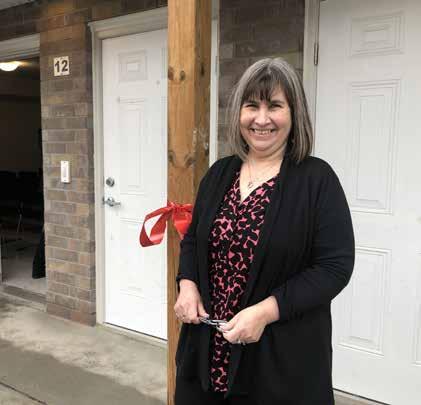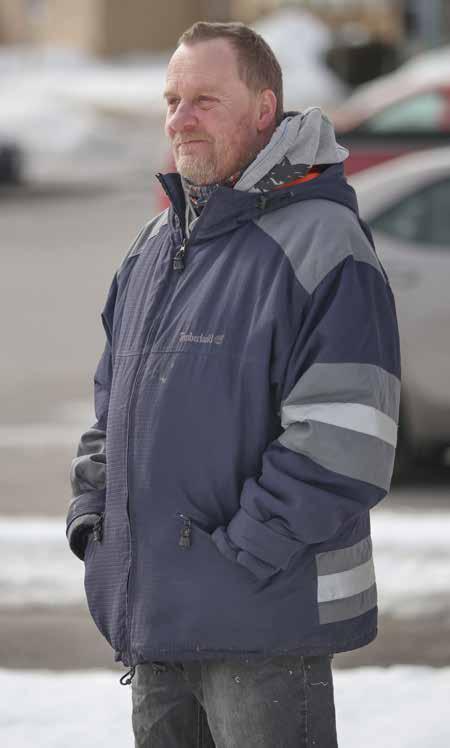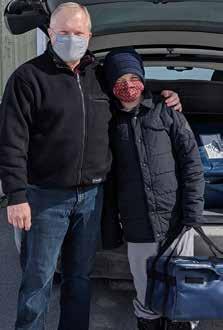
5 minute read
Olde Gaol Museum
Olde Gaol Museum is integral to local history and tourism and deserves city support
BARBARA DOYLE
Advertisement
Barbara Doyle is the project coordinator of the Olde Gaol Museum and also manages the day-to-day operations of the museum on a volunteer basis.
For more than 150 years the building at 50 Victoria Ave. N. in Lindsay has been solidly and steadfastly present in the landscape of our architectural community. Known over time as the Mighty Fortress, its role has been transformed from housing inmates to housing local history, through the efforts of the Victoria County Historical Society, which operates it as the Olde Gaol Museum.
It’s a critical piece of our historical landscape — and it needs the city’s help through regular and sustained funding. Fortunately, the city has been supportive of the Olde Gaol Museum and we work closely with city staff to maintain what we have.
The museum is one of Lindsay’s major tourist attractions. For every $1 invested in heritage sites, tourists spend $3.70 at other local businesses. A vibrant arts and culture scene also attracts new residents and businesses to the area, which results in community growth, prosperity and jobs.
Most municipalities fund their museums for core operations including staffing, recognizing the positive returns for the local economy as well as supporting the moral and ethical premise of preserving local history. The museum isn’t a dusty old vault filled with junk no one cares about; it’s the outer frame that houses the archival heartbeats of thousands of individuals, telling the stories of who they were, what they cared about and the contributions they made to creating the city that we enjoy today.
Growing up in Lindsay, I remember being frightened of the rumours of a large guillotine behind those giant courtyard walls and the prisoners housed there. Now I know that it was a gallows, constructed for the murderers sentenced to hang, with the last in 1924. I know lots of jail history but I also know about local artists, 22
The Olde Gaol Museum.
creators, authors, service groups, businesses, schools, churches and military service men and women, the founding fathers and community heroes, because of my time volunteering at the museum.
Since 2018, I have worked with an incredible team of volunteers and contract staffers to move the museum forward on its evolutionary path to becoming an engaging community space. The museum has shifted from emphasizing objects to exploring and studying the relationships, identities and unique communities of the city through a lens of ethics, moralities and politics. In a nutshell, telling the untold stories but also the “why” of why you should or could care about them. Exhibit development and planning is a long process, whether displays are developed on-site or are travelling or digital ones, and the museum runs a three-to-five year curatorial plan that maps out different exhibits and the resources needed to accomplish that plan, both human and financial. You see the results of that work when you visit the museum.
What you don’t see is the collections work and facilities management that takes up the bulk of our financial and human resources. Small community museums like ours have been systemically and chronically underfunded for decades, relying on volunteer labour to keep the doors open. That simply isn’t acceptable or reasonable with today’s legislation of Community Museum Standards
and non-profit governance requirements. Community Museum Standards are 10 basic categories of governance, including finance, collections standards and interpretation, among other areas. Whether in a hulking Italianate stone fortress from 1863 or a brand-new facility, the cost of proper care, documentation and storage of the collection is the same. We treat the building as our largest artifact, being heritage designated and in need of care and attention to keep it open to the public. Yes, sometimes it needs repairs, and sometimes there are spiders and flies and the odd mouse gets in, just like your own home, but we do the repairs and we kill the spiders and get on with museum business.
It takes six to 10 hours to intake an object, document it, clean it, photograph it and get it ready for storage after it has been recommended for formal acceptance into the museum’s collection by the curatorial committee and approved by the board of directors. This work needs to be done by qualified and trained professionals and the storage requirements are expensive; proper archival boxes can range from $15 to $100 per object, depending on size and type of object.
In 2020, we added 290 items to the nearly 20,000 in the collection. This is the challenging part about museums that the community doesn’t see; to preserve our history takes financial support and core operational funding for consistent and qualified staff, but this part of the work provides no direct revenue to offset the costs. Simply put, collection management costs money but makes none, even though museums are legislated to do this work in a certain way.
Exhibits and programming need financial support, while door admissions or event ticket prices rarely cover expenses. It’s not “bad business,” but more about keeping history, arts and culture accessible to everyone in the community while also offering it in the style and quality that our community deserves. These project costs are often offset by grants or sponsorships, but these are not typically available for basic operational costs.
Coming through with a base level of funding as a municipality is the direction in which we must move for the long-term sustainability of our museum. We look forward to working with the city in the coming months toward this goal.
Visit the museum online at www.oldegaolmuseum. ca and follow us on social media for reopening updates and virtual exhibits.
Jump In and join the conversation
Have you checked out our online engagement site Jump In? This platform allows residents to have their say on projects and initiatives that impact the community.



Learn





Find out what projects are taking place across Kawartha Lakes and how they impact you. Participate in mapping tools, surveys or ask questions directly to project teams!


Engage
www.kawarthalakes.ca/JumpIn
Follow along
Listen in on important meetings and follow along with each step of the project’s process.








